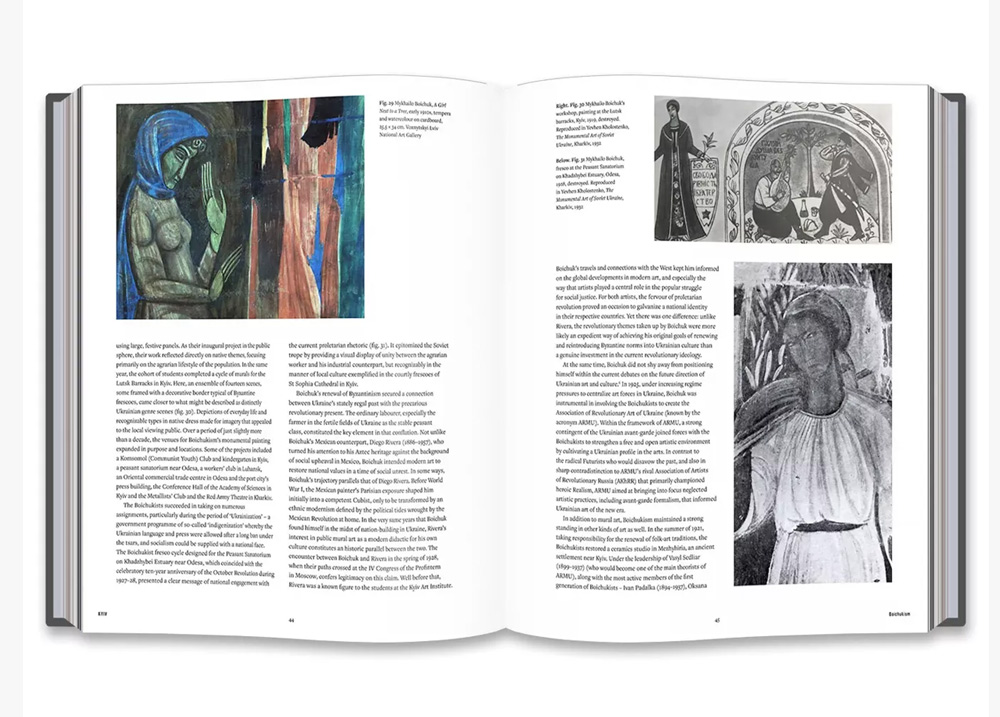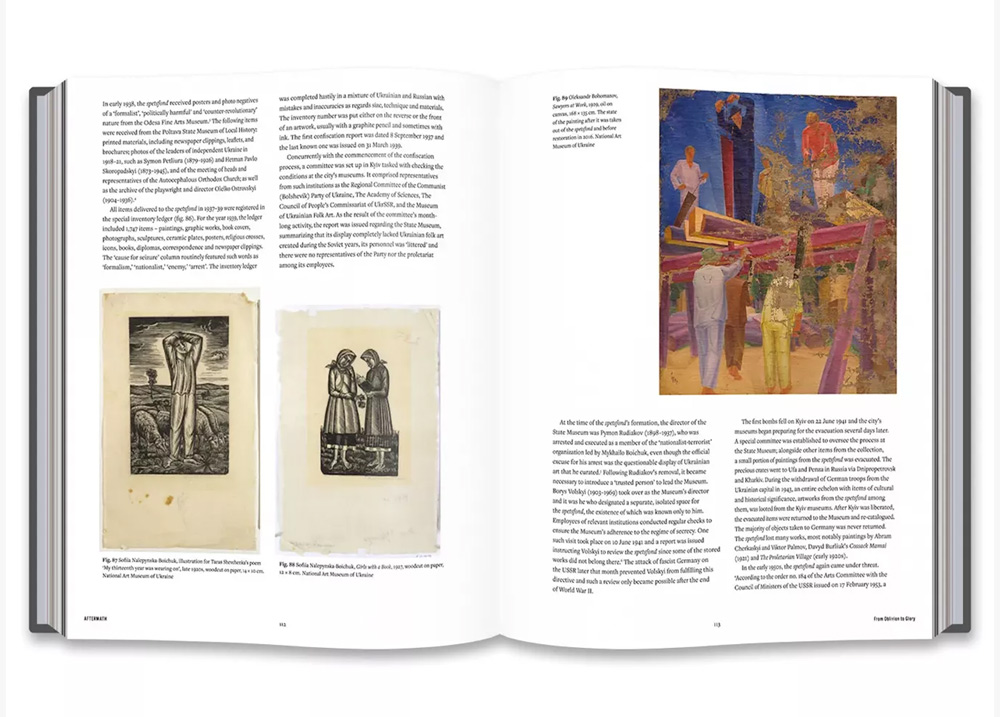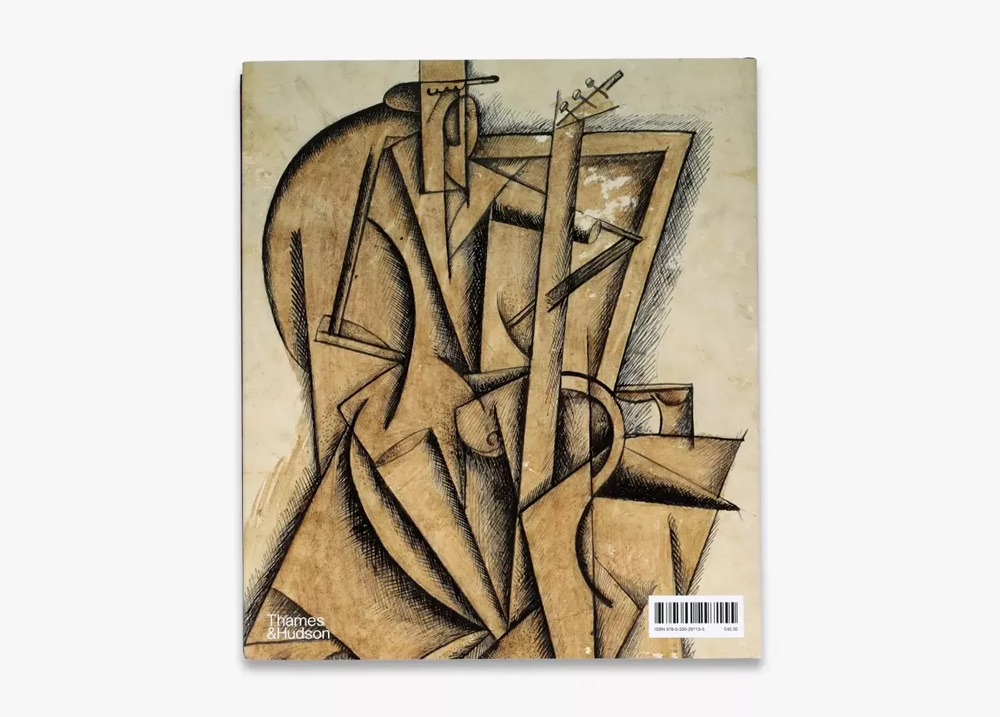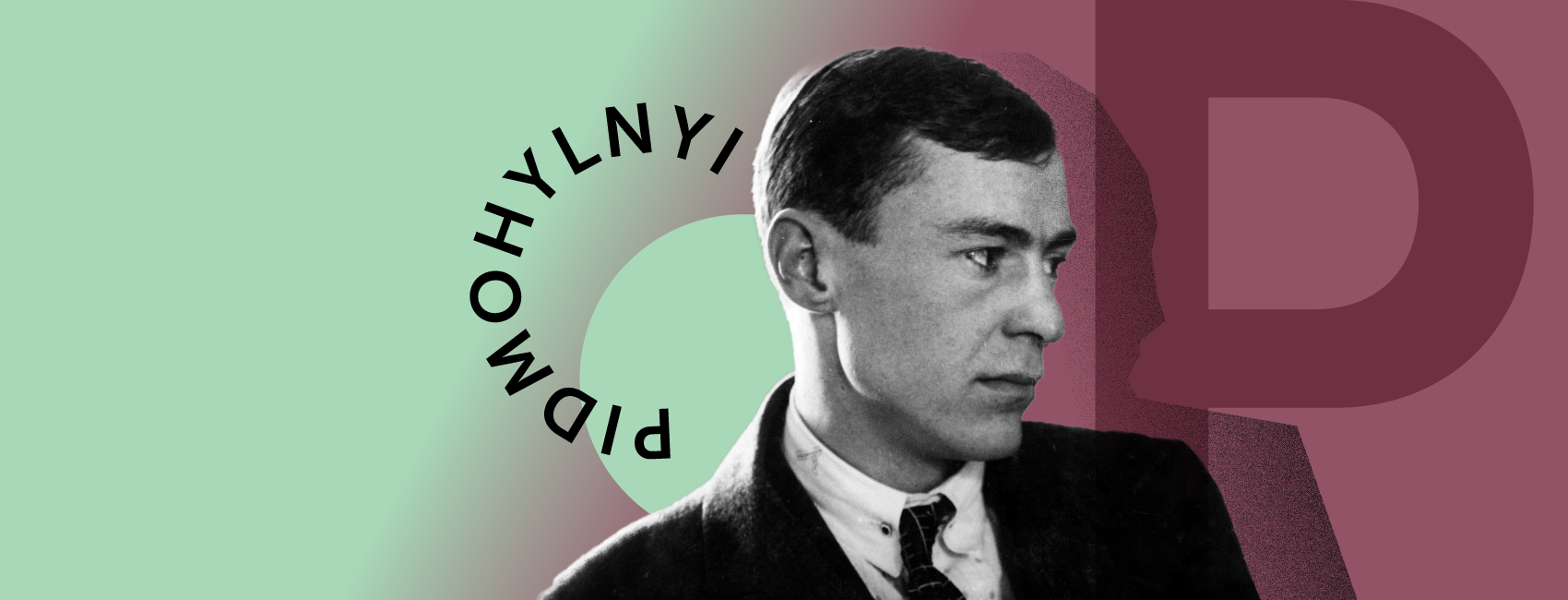* ESC - закрити вікно пошуку
Chytomo Picks
‘In the Eye of the Storm. Modernism in Ukraine, 1900-1930s’: more than just a catalog
16.11.2023
Thames & Hudson, the renowned British publishing house known for its focus on art books, has released “In the Eye of the Storm. Modernism in Ukraine 1900’s – 1930’s” in English. The book features twelve authors, mostly from Ukraine, who wrote about the context and development of Ukrainian modernism. This publication is still one of few books dedicated to Ukrainian art in English, and what makes it even more exceptional is its publication by a foreign publisher. Oksana Semenik, an art historian and creator of a popular Ukrainian art history Twitter account, tells Chytomo why the book is worth reading and why it is important now.
Last year, I worked at the Zimmerli Museum (at Rutgers University) in New Jersey. The museum possesses an extensive collection of Ukrainian art, along with art from other countries which were occupied by the Soviet Union and were its republics. Having visited Moscow and St. Petersburg several times, Norton Dodge started the collection in the 1960s, initially focusing on so-called non-conformist art at first, or what wasn’t socialist realism propaganda. Over time, the collection expanded and included works from the avant-garde, the imperial period and more items of contemporary art.
Why would you have such a long introduction in a book published by a European publishing house? The answer lies in the museum’s obvious gap between the quantity of books about Russian and Ukrainian art. Several shelves were devoted to the so-called Russian avant-garde. There were books about Oleksandra Exter, David Burliuk and Kazimir Malevich. The books, of course, had a Russian perspective. And this museum probably has the largest collection of this kind. I hate to think how many books about Ukrainian art there are in other museums. That’s why every book about Ukrainian culture published in English is as good as gold. It is great luck when a book shows artistic phenomenon in a historical context as fully as “In the Eye of the Storm. Modernism in Ukraine, 1900-1930s.”

This book was inspired by the exhibition of the same name that once took place in Madrid, at the Museo Nacional Thyssen-Bornemisza, and is now at the Museum Ludwig, located in Cologne, Germany (curated by Konstantyn Akinsha, Katya Denysova and Olena Koshuba-Volvach). It’s important to note that this book is not a classical catalog. While the publishers and authors could have simply published several texts and works from the exhibition, they opted for a more comprehensive approach. Instead, they choose to showcase the history of the Ukrainian avant-garde in its entirety — from the first avant-garde exhibition in Kyiv to the eventual destruction of works and their relegation to the “special funds” of museums, hidden from public view.
The book is divided into four sections (Kyiv, Kharkiv, Odesa and Consequences) and includes a separate reproductions collection. Leading art historians, researchers and museum professionals are among the authors: Olena Koshuba-Volvach, Myroslava Mudrak, Yulia Lytvynets, Oksana Barshynova and others. The book, like the exhibition, features about 100 works, from paintings and sketches to collages and theater design items. The featured art is unique and interesting: from the serene colors characteristic of the Boychukists’ frescoes, to the dynamic futurism of Oleksandr Bohomazov’s works. These pieces are sourced from the National Art Museum of Ukraine and the State Museum of Theater, Music and Cinema of Ukraine, the Museo Nacional Thyssen-Bornemisza and from select museums in the United States and Israel.
The fact that the book is in a coffee table format — 240x280x27 mm — has its pros and cons. The advantage is that you can see the works better. This is, after all, a book about art. It is beautiful and is an ideal gift for when you meet a museum director, for instance, or a cultural diplomat or just someone you care about. On the other hand, people tend to focus on the images in such books and, unfortunately, pay less attention to the texts. That’s a pity, though, because the texts in this book are far from dull. On the contrary, they provide essential context for the development of Ukrainian modernism and address a critical question: Why is the Russian avant-garde widely recognized, yet the Ukrainian avant-garde remains largely unknown?

How has Ukrainian modernism started and ended?
In the Kyiv section, authors Katya Denysova, Olena Koshuba-Volvach, Hillel Kazovsky and Myroslava Mudrak highlighted important phenomena and personalities of the Kyiv avant-garde. For instance, they discuss the connections between Ukrainian avant-garde artists and artists from the countryside who were representatives of traditional art. This interaction is what sets the Ukrainian avant-garde apart. The authors trace how avant-garde artists incorporated elements like the colors and plasticity from traditional art. Rural artists were also invited to exhibitions, often embroidering based on sketches by Exter and Malevich. “Exter maintained the thought that decorative designs for embroideries and carpets were intelligible to contemporary artists because they approached these as colouristic tasks with sophisticated rhythms and complex compositions,” Katya Denysova writes.
Maybe if Western scholars knew about the influence the traditional Ukrainian art had on artists they consider Russian, it might have accelerated efforts towards decolonization in art history. The section also discusses the work of the Culture League, an association of Jewish artists that began its activity in the independent Ukrainian People’s Republic. The young state supported multiculturalism and the development of Jewish culture. The Cultural League was founded in Kyiv with the support of the Ministry of Jewish Affairs.

Texts on the theory of new art by Oleksandr Bohomazov, authored by Olena Koshuba-Volvach, and Myroslava Mudrak’s exploration of Mykhailo Boichuk and his school’s quest for a Ukrainian national style are crucial for understanding the diversity of Ukrainian modernism. Boichuk was one of the founders of the Ukrainian Academy of Art, the first educational institution of its kind in the country. Prior to its establishment, Ukrainian artists had to go to St. Petersburg or, if they had the opportunity, to Europe to study. Myroslava Mudrak describes Boichuk’s influence at the Academy.
“Together with other appointed members the brothers Vasyl and Fedir Krychevskyi and Heorhii Narbut who became the rector of the Academy they envisioned a programme that would put contemporary Ukrainian art on par with European standards and identify the modern character of the new sovereign state. Boichuk utilized his skills as a mentor, his ability to galvanize individual talents into communal efforts, and his almost paternal approach to his students to realize some of the most ambitious state projects. These projects not only funded the Academy’s monumentalist curriculum but also supported Boichuk’s students.. At the core of Boichuk pedagogy was the analysis of great works of art from all periods and geographies, from the mosaics of ancient Egypt to the frescoes of Florence,” Unfortunately, Boichuk and his students were executed in 1937, destroying the entire art school.

In my view, the book’s sections are named after cities like Kyiv, Kharkiv, and Odesa primarily for reader’s convenience and to underscore the fact that the avant-garde movement was not limited to Kyiv. The articles in the sections are not necessarily strictly limited to discussing their respective cities. For instance, Olena Kovalchuk’s article about theater in the Kharkiv section also describes the scenography by Oleksandra Ekster, Anatol Petrytskyi and Oleksandr Khvostenko-Khvostov, who were primarily associated with Kyiv. Or there’s Oksana Barshynova’s article about Ivan Kavaleridze, a sculptor and film director who is more closely associated with Kyiv, Sumy and Donetsk regions than Kharkiv. The Odesa section contains two texts about the Society of the Independent Artists based in Odesa and the Odesa Film Factory as well as avant-garde cinema in general. But these sections also deal with important phenomena and names from Kharkiv (Maria Synyakova, Vasyl Yermilov, Borys Kosarev) and Odesa (Teofilii Freierman, Amshei Nurenberg, Mykhailo Hershenfeld).
Tetiana Zhmurko writes about Kharkiv as the capital of design, and how despite its image as an industrial city, avant-garde art in Kharkiv also absorbed a lot of Ukrainian traditional art. This is particularly evident in the works of artists who gathered in the village of Krasna Polyana, such as Maria Synyakova, Borys Kosarev and Vasyl Yermilov. Russian futurists, Vladimir Mayakovsky and Velimir Khlebnikov, also visited the village. Many museums, including MoMA in New York, still call Synyakova a Russian artist. The artist herself recalled that she was most inspired by the natural landscape of Slobozhanshchyna. Zhmurko writes: “For Syniakova, life in Krasna Polyana had become an alternative to city life, which was gradually sinking into devastation and chaos. Her series of works on the war (1915–18) show a holistic picture of a disintegrating world being replaced by a kind of fragmentary collage vision. This body of work strikingly contrasts the harmonious, creative, and natural elements against the backdrop of destruction and aggression.”
And, of course, discussing Kharkiv in the 1920s inevitably leads to the influential magazine Nova Generatsiia (New Generation), edited by the futurist poet Mykhail Semenko. This publication featured art criticism, manifestos, theoretical articles, new experimental prose and poetry, and translations of foreign contemporary texts, all in the Ukrainian language, of course. Kazimir Malevich, whose ideas were considered too modern and unacceptable in Russia, was published in the Nova Generatsiia magazine The authors and editors of the journal identified as pan-futurists, and Myroslava Mudrak articulates their vision as being about more than being about post nationality or culture: “The purpose of Pan Futurism, therefore, was to propose a way of thinking about art and its place in Ukrainian life during an era that was clearly moving forward to a yet unknown destiny. Essentially, Pan futurism was to define a period of transition for Ukrainian culture as a whole.”

These texts are far more than mere standalone pieces — in a style that is laconic and easy to understand, they explain Ukrainian context to those who may have just learned about the distinction between Ukrainian and Russian art. The texts are also interesting for Ukrainian readers, because we often don’t know much about ourselves. This obliviousness is, after all, also a product of colonization. It was achieved not only through the physical elimination of artists or Russification — artists were also often forced to emigrate abroad for political or personal reasons. Under the totalitarian regime, discussing or remembering these artists was forbidden. Archives and cultural property were also destroyed or taken to Russia.
RELATED: From expeditions to books: Behind Ukraïner’s unique approach to publishing
That is why the section “Consequences” is so important. It deals with those who emigrated (Oleksandr Archypenko, Volodymyr Baranov-Rosine, Sonia Delaunay) and their desire to stay connected to Ukrainian culture. Additionally, it explores the existence of special funds in museums, where the works of undesirable artists were hidden or destroyed.
That’s why we know so little about our avant-garde, and why so few of their works are in our museums and collections. That’s why these paintings from Ukrainian museums are so valuable. And that’s why you know the answer to the question: “Where are your Malevichs or Exters in your collections, if they are indeed Ukrainian?”
The publication is a part of the “Chytomo Picks: New Books from Ukraine” project. The materials have been prepared with the assistance of the Ukrainian Book Institute at the expense of the state budget. The author’s opinion may not coincide with the official position of the Ukrainian Book Institute.
This publication is sponsored by the Chytomo’s Patreon community
що більше читаєш – то ширші можливості






